- Better-Parts Mechanical Equipment Co.,Ltd
- Komatsu FENDER Komatsu TURBOCHARGER AS Komatsu MAST
- Home
- Stock Categories
- Komatsu FENDER
- Komatsu TURBOCHARGER AS
- Komatsu MAST
- Komatsu Dowel
- Komatsu Case and shell
- Komatsu Piston rod
- Komatsu GRILLE
- Komatsu Valve assembly
- Komatsu SUPPORT
- Komatsu harness
- Komatsu GUARD
- Komatsu ROD
- Komatsu Tank (oil / water tank) assembly
- Komatsu STEP
- Komatsu FORK ASS'Y
- Komatsu Portal assembly
- Komatsu Inert wheel assembly
- Komatsu IDLER ASS'Y
- Komatsu axis
- Komatsu Brace
- Komatsu STEERING VALVE
- Komatsu HEAD
- Komatsu jet pump
- Komatsu piston
- Komatsu cylinder assembly
- Komatsu MUFFLER
- Komatsu ELBOW
- Komatsu PLUG
- Komatsu BUSHING
- Komatsu SEAL
- Komatsu CLAMP
- Komatsu lever
- Komatsu SHEET
- Komatsu Sealing gasketComplete set of appliances
- Komatsu CONNECTOR
- Komatsu RADIATOR
- Komatsu BREAKER
- Komatsu ACCUMULATOR
- Komatsu TANK ASS'Y
- Komatsu SOLENOID
- Komatsu NET
- Komatsu A partition
- Komatsu Filter
- Komatsu STEERING
- Komatsu BATTERY
- Komatsu plate
- Komatsu 9CYLINDER ASS'
- Komatsu PANEL ASS'Y
- Komatsu CONTACTOR ASS'Y
- Komatsu BACK REST
- Komatsu HOOD ASS'Y
- Komatsu RING GEAR
- Komatsu CAP ASS'Y
- Komatsu BOARD
- Komatsu BAFFLE
- Komatsu BOLT
- Komatsu cable
- Komatsu FUEL TANK
- Komatsu LIFT CYLINDER A
- Komatsu MOTOR ASS'Y
- Komatsu body
- Komatsu Disassembly tool
- Komatsu CONTROL
- Komatsu Air freshener
- Komatsu BEARING
- Komatsu steel wire
- Komatsu "connecting rod "
- Komatsu CAM
- Komatsu RAIL
- Komatsu ring
- Komatsu CAGE
- Komatsu FLANGE
- komatsu box
- komatsu Edge (edge)
- Komatsu BACK REST
- Komatsu CYLINDER
- komatsu Pillar
- Komatsu DUCT
- Komatsu TANK
- komatsu bracket
- Komatsu GOVERNOR ASS'Y
- Komatsu RING GEAR
- komatsu Tube assembly
- Komatsu LINK
- komatsu Flange
- Komatsu HOOD
- komatsu Base line, base
- Komatsu LADDER
- komatsu Screw
- Komatsu FORK ASS'Y
- Komatsu RETAINER
- Komatsu TOOL
- komatsu Chain joint
- komatsu connecting rod
- Komatsu TUBE
- komatsu Brace
- komatsu Seat assembly
- komatsu Filter assembly
- komatsu Disassembly tool
- komatsu Protector
- Komatsu MASK
- Komatsu CHUTE
- komatsu top
- Komatsu SPACER
- komatsu Unloading
- Komatsu COOLER
- komatsu Flange flange
- Komatsu SENSOR ASS'Y
- Komatsu FAN
- Komatsu STAY
- komatsu pipe
- Komatsu WIRE ASS'Y
- Komatsu GLASS
- Komatsu DOOR
- Komatsu MOTOR
- komatsu rod
- komatsu plate
- Komatsu SERVICE KIT
- Komatsu VALVE ASS'Y
- komatsu Regulator
- Komatsu RIM ASS'Y
- Komatsu IDLER ASS'Y
- Komatsu tool
- Komatsu ROTOR
- Komatsu Support and stop the use of a lump
- Komatsu PLATFORM
- Komatsu A housing
- Komatsu PAD
- Komatsu supporting
- Komatsu FLOOR
- Komatsu Hub
- Komatsu HUB
- Komatsu gear
- Komatsu CARRIER
- Komatsu SPRING
- Komatsu Seal up
- Komatsu GEAR
- Komatsu cable
- Komatsu CORE
- Komatsu Hose
- Komatsu SHROUD
- Komatsu BOGIE
- Komatsu PROTECTOR
- Komatsu injector
- Komatsu COLLAR
- Komatsu FILTER ASS'Y
- Komatsu BLOCK
- Komatsu lamp
- Komatsu HOLDER ASS'Y
- Komatsu sensor
- Komatsu CONDENSER ASS'Y
- Komatsu Spacer
- Komatsu TURBINE
- Komatsu ACTUATOR
- Komatsu Tanker
- Komatsu Shield
- Komatsu CHAIN ASS'Y
- Komatsu ROOF
- Komatsu KIT
- Komatsu BAR
- Komatsu SCREEN
- Komatsu Kit, repair bag
- Komatsu gear
- Komatsu GASKET
- Komatsu GUIDE
- Komatsu RELAY
- Komatsu SHOE
- Komatsu COMPRESSOR
- Komatsu Wire harness
- Komatsu RIM
- Komatsu Wheel assembly
- Komatsu INJECTOR ASS'Y
- Komatsu CAP
- Komatsu Maintainer
- Komatsu LAMP
- Komatsu Valve assembly
- Komatsu OIL PAN
- Komatsu Window assembly
- Komatsu TRACK ROLLER AS
- Komatsu Reticulation
- Komatsu HOLDER
- Komatsu COUPLING
- Komatsu Cylinder head
- Komatsu FORK
- Komatsu WIRE
- Komatsu SUSPENSION
- Komatsu Filter element
- Komatsu BOSS
- Komatsu YOKE
- Komatsu Sleeve
- Komatsu SWITCH
- Komatsu HEATER
- Komatsu motor
- Komatsu BASE
- Komatsu ADJUSTER
- Komatsu DISC
- Komatsu The repair kit
- Komatsu IDLER
- Komatsu ALTERNATOR
- Komatsu Filter
- Komatsu HAND RAIL
- Komatsu BRAKE
- Komatsu belt
- Komatsu ANTENNA
- Komatsu DAMPER
- Komatsu body
- Komatsu Stop actuator
- Komatsu CHAIN
- Komatsu STATOR
- Komatsu ASS'Y
- Komatsu EVAPORATOR
- Komatsu CUSHION
- Komatsu BELT
- Komatsu RECEIVER
- Komatsu CHISEL
- Komatsu rubber
- Komatsu RING
- Komatsu HANGER
- Komatsu BAFFLE
- Komatsu RUBBER
- Komatsu KNUCKLE
- Komatsu HANDRAIL
- Komatsu Suspension assembly
- Komatsu HARNESS
- Komatsu STRIKER
- Komatsu WASHER
- Komatsu starter
- Komatsu SPROCKET
- Komatsu PLUNGER
- Komatsu PEDAL
- Komatsu NUT
- Komatsu BOLT
- Komatsu METER
- Komatsu Lining
- Komatsu TIRE
- Komatsu TESTER
- Komatsu ELBOW
- Komatsu TRAY
- Komatsu MAT
- Komatsu TRUNNION
- Komatsu PILOT
- Komatsu Joint
- Komatsu RAIL
- Komatsu oil seal
- Komatsu TRACK ROLLER
- Komatsu GAUGE
- Komatsu CAGE (rear axle)
- Komatsu ROLLER
- Komatsu CRADLE
- Komatsu Supporting wheel
- Komatsu SOLENOID
- Komatsu Decal glaze method
- Komatsu UPPER
- Komatsu Steering wheel
- Komatsu HINGE
- Komatsu BAND
- Komatsu Driving base
- Komatsu STOPPER
- Komatsu Steam pipe
- Komatsu PLUG
- Komatsu STRAINER
- Komatsu SPOOL
- Komatsu Pinion
- Komatsu STUD
- Komatsu SHIM
- Komatsu Headlights
- Komatsu STARTER
- Komatsu MEMBER
- Komatsu RADIO
- Komatsu sensor
- Komatsu BATTERY,WET
- Komatsu injector
- Komatsu LOCK
- Komatsu KNOB
- Komatsu set
- Komatsu IMPELLER
- Komatsu BOOT
- Komatsu RACE
- Komatsu Protector
- Komatsu BALL
- Komatsu ROD
- Komatsu SOCKET
- Komatsu A housing
- Komatsu CLAMP
- Komatsu TEE
- Komatsu CYLINDER ASS'
- Komatsu trachea
- Komatsu column
- Komatsu instrument
- Komatsu pipage
- Komatsu Hose assembly
- Komatsu Transporter
- Komatsu HANDLEA ASS'Y
- Komatsu Controller
- Komatsu catena
- Komatsu Snap ring
- Komatsu Buckle
- Komatsu filter cartridge
- Komatsu Felt products
- Komatsu chucking
- Komatsu Shim
- Komatsu Illuminating assembly
- Komatsu Line
- Bearing Units
- Linear Bearings
- Complex Bearings
- Hydraulic Vane Pump
- Hydraulic Valve
- Hydraulic Gear Pump
- Oil Pump
- Hydraulic Piston Pump/Motor
- Precision Ball Bearings
- Self Aligning Ball Bearings
- Plain Bearings
- Single Row Ball Bearings
- Mounted Ball Bearings
- Mounted Tapered Roller Bearings
- Quality Control
- Komatsu FENDER
- Komatsu TURBOCHARGER AS
- Komatsu MAST

Home> Company News> Noise sources of vane pumps
- Product Groups
Komatsu FENDER
(681)Komatsu TURBOCHARGER AS
(33)Komatsu MAST
(432)Komatsu Dowel
(935)Komatsu Case and shell
(490)Komatsu Piston rod
(294)Komatsu GRILLE
(190)Komatsu Valve assembly
(794)Komatsu SUPPORT
(883)Komatsu harness
(899)Komatsu GUARD
(889)Komatsu ROD
(805)Komatsu Tank (oil / water tank) assembly
(21)Komatsu STEP
(764)Komatsu FORK ASS'Y
(676)Komatsu Portal assembly
(29)Komatsu Inert wheel assembly
(59)Komatsu IDLER ASS'Y
(88)Komatsu axis
(925)Komatsu Brace
(74)Komatsu STEERING VALVE
(17)Komatsu HEAD
(830)Komatsu jet pump
(174)Komatsu piston
(900)Komatsu cylinder assembly
(497)Komatsu MUFFLER
(261)Komatsu ELBOW
(374)Komatsu PLUG
(91)Komatsu BUSHING
(630)Komatsu SEAL
(908)Komatsu CLAMP
(218)Komatsu lever
(512)Komatsu SHEET
(534)Komatsu Sealing gasketComplete set of appliances
(364)Komatsu CONNECTOR
(376)Komatsu RADIATOR
(192)Komatsu BREAKER
(23)Komatsu ACCUMULATOR
(108)Komatsu TANK ASS'Y
(126)Komatsu SOLENOID
(232)Komatsu NET
(762)Komatsu A partition
(78)Komatsu Filter
(665)Komatsu STEERING
(49)Komatsu BATTERY
(117)Komatsu plate
(921)Komatsu 9CYLINDER ASS'
(234)Komatsu PANEL ASS'Y
(143)Komatsu CONTACTOR ASS'Y
(27)Komatsu BACK REST
(61)Komatsu HOOD ASS'Y
(156)Komatsu RING GEAR
(118)Komatsu CAP ASS'Y
(133)Komatsu BOARD
(924)Komatsu BAFFLE
(218)Komatsu BOLT
(173)Komatsu cable
(915)Komatsu FUEL TANK
(50)Komatsu LIFT CYLINDER A
(388)Komatsu MOTOR ASS'Y
(193)Komatsu body
(176)Komatsu Disassembly tool
(82)Komatsu CONTROL
(62)Komatsu Air freshener
(130)Komatsu BEARING
(886)Komatsu steel wire
(515)Komatsu "connecting rod "
(162)Komatsu CAM
(79)Komatsu RAIL
(873)Komatsu ring
(917)Komatsu CAGE
(333)Komatsu FLANGE
(432)komatsu box
(1071)komatsu Edge (edge)
(193)Komatsu BACK REST
(60)Komatsu CYLINDER
(3000)komatsu Pillar
(52)Komatsu DUCT
(716)Komatsu TANK
(652)komatsu bracket
(3001)Komatsu GOVERNOR ASS'Y
(172)Komatsu RING GEAR
(117)komatsu Tube assembly
(55)Komatsu LINK
(503)komatsu Flange
(121)Komatsu HOOD
(829)komatsu Base line, base
(60)Komatsu LADDER
(261)komatsu Screw
(179)Komatsu FORK ASS'Y
(724)Komatsu RETAINER
(222)Komatsu TOOL
(265)komatsu Chain joint
(158)komatsu connecting rod
(180)Komatsu TUBE
(3000)komatsu Brace
(51)komatsu Seat assembly
(90)komatsu Filter assembly
(193)komatsu Disassembly tool
(82)komatsu Protector
(659)Komatsu MASK
(117)Komatsu CHUTE
(84)komatsu top
(457)Komatsu SPACER
(421)komatsu Unloading
(115)Komatsu COOLER
(210)komatsu Flange flange
(277)Komatsu SENSOR ASS'Y
(124)Komatsu FAN
(105)Komatsu STAY
(877)komatsu pipe
(3001)Komatsu WIRE ASS'Y
(109)Komatsu GLASS
(586)Komatsu DOOR
(881)Komatsu MOTOR
(288)komatsu rod
(2068)komatsu plate
(406)Komatsu SERVICE KIT
(1282)Komatsu VALVE ASS'Y
(3000)komatsu Regulator
(78)Komatsu RIM ASS'Y
(126)Komatsu IDLER ASS'Y
(182)Komatsu tool
(1285)Komatsu ROTOR
(188)Komatsu Support and stop the use of a lump
(573)Komatsu PLATFORM
(608)Komatsu A housing
(1738)Komatsu PAD
(562)Komatsu supporting
(692)Komatsu FLOOR
(437)Komatsu Hub
(877)Komatsu HUB
(464)Komatsu gear
(734)Komatsu CARRIER
(645)Komatsu SPRING
(748)Komatsu Seal up
(1176)Komatsu GEAR
(3000)Komatsu cable
(1659)Komatsu CORE
(577)Komatsu Hose
(3001)Komatsu SHROUD
(738)Komatsu BOGIE
(45)Komatsu PROTECTOR
(55)Komatsu injector
(1522)Komatsu COLLAR
(236)Komatsu FILTER ASS'Y
(168)Komatsu BLOCK
(2302)Komatsu lamp
(2673)Komatsu HOLDER ASS'Y
(57)Komatsu sensor
(986)Komatsu CONDENSER ASS'Y
(49)Komatsu Spacer
(1629)Komatsu TURBINE
(68)Komatsu ACTUATOR
(41)Komatsu Tanker
(67)Komatsu Shield
(428)Komatsu CHAIN ASS'Y
(135)Komatsu ROOF
(75)Komatsu KIT
(1050)Komatsu BAR
(298)Komatsu SCREEN
(45)Komatsu Kit, repair bag
(607)Komatsu gear
(3001)Komatsu GASKET
(101)Komatsu GUIDE
(316)Komatsu RELAY
(114)Komatsu SHOE
(177)Komatsu COMPRESSOR
(181)Komatsu Wire harness
(542)Komatsu RIM
(342)Komatsu Wheel assembly
(530)Komatsu INJECTOR ASS'Y
(197)Komatsu CAP
(481)Komatsu Maintainer
(647)Komatsu LAMP
(366)Komatsu Valve assembly
(786)Komatsu OIL PAN
(209)Komatsu Window assembly
(751)Komatsu TRACK ROLLER AS
(216)Komatsu Reticulation
(666)Komatsu HOLDER
(294)Komatsu COUPLING
(313)Komatsu Cylinder head
(611)Komatsu FORK
(234)Komatsu WIRE
(334)Komatsu SUSPENSION
(106)Komatsu Filter element
(753)Komatsu BOSS
(112)Komatsu YOKE
(193)Komatsu Sleeve
(611)Komatsu SWITCH
(449)Komatsu HEATER
(127)Komatsu motor
(788)Komatsu BASE
(117)Komatsu ADJUSTER
(115)Komatsu DISC
(240)Komatsu The repair kit
(912)Komatsu IDLER
(157)Komatsu ALTERNATOR
(174)Komatsu Filter
(1463)Komatsu HAND RAIL
(443)Komatsu BRAKE
(133)Komatsu belt
(531)Komatsu ANTENNA
(179)Komatsu DAMPER
(138)Komatsu body
(187)Komatsu Stop actuator
(621)Komatsu CHAIN
(160)Komatsu STATOR
(90)Komatsu ASS'Y
(1121)Komatsu EVAPORATOR
(80)Komatsu CUSHION
(240)Komatsu BELT
(101)Komatsu RECEIVER
(80)Komatsu CHISEL
(104)Komatsu rubber
(445)Komatsu RING
(362)Komatsu HANGER
(79)Komatsu BAFFLE
(209)Komatsu RUBBER
(140)Komatsu KNUCKLE
(184)Komatsu HANDRAIL
(611)Komatsu Suspension assembly
(441)Komatsu HARNESS
(183)Komatsu STRIKER
(59)Komatsu WASHER
(91)Komatsu starter
(521)Komatsu SPROCKET
(107)Komatsu PLUNGER
(142)Komatsu PEDAL
(214)Komatsu NUT
(96)Komatsu BOLT
(128)Komatsu METER
(145)Komatsu Lining
(682)Komatsu TIRE
(160)Komatsu TESTER
(100)Komatsu ELBOW
(370)Komatsu TRAY
(68)Komatsu MAT
(609)Komatsu TRUNNION
(113)Komatsu PILOT
(98)Komatsu Joint
(276)Komatsu RAIL
(92)Komatsu oil seal
(226)Komatsu TRACK ROLLER
(111)Komatsu GAUGE
(79)Komatsu CAGE (rear axle)
(321)Komatsu ROLLER
(188)Komatsu CRADLE
(129)Komatsu Supporting wheel
(128)Komatsu SOLENOID
(101)Komatsu Decal glaze method
(43)Komatsu UPPER
(104)Komatsu Steering wheel
(3001)Komatsu HINGE
(168)Komatsu BAND
(137)Komatsu Driving base
(2137)Komatsu STOPPER
(159)Komatsu Steam pipe
(2440)Komatsu PLUG
(101)Komatsu STRAINER
(41)Komatsu SPOOL
(110)Komatsu Pinion
(1835)Komatsu STUD
(33)Komatsu SHIM
(45)Komatsu Headlights
(1857)Komatsu STARTER
(103)Komatsu MEMBER
(31)Komatsu RADIO
(32)Komatsu sensor
(1977)Komatsu BATTERY,WET
(57)Komatsu injector
(1053)Komatsu LOCK
(133)Komatsu KNOB
(39)Komatsu set
(401)Komatsu IMPELLER
(44)Komatsu BOOT
(50)Komatsu RACE
(45)Komatsu Protector
(504)Komatsu BALL
(27)Komatsu ROD
(1487)Komatsu SOCKET
(43)Komatsu A housing
(1532)Komatsu CLAMP
(209)Komatsu TEE
(37)Komatsu CYLINDER ASS'
(3000)Komatsu trachea
(2561)Komatsu column
(314)Komatsu instrument
(2406)Komatsu pipage
(171)Komatsu Hose assembly
(481)Komatsu Transporter
(431)Komatsu HANDLEA ASS'Y
(1050)Komatsu Controller
(657)Komatsu catena
(286)Komatsu Snap ring
(109)Komatsu Buckle
(115)Komatsu filter cartridge
(119)Komatsu Felt products
(435)Komatsu chucking
(968)Komatsu Shim
(3001)Komatsu Illuminating assembly
(854)Komatsu Line
(74)Bearing Units
(54)Linear Bearings
(55)Complex Bearings
(58)Hydraulic Vane Pump
(3)Hydraulic Valve
(7)Hydraulic Gear Pump
(7)Oil Pump
(1)Hydraulic Piston Pump/Motor
(42)Precision Ball Bearings
(299)Self Aligning Ball Bearings
(300)Plain Bearings
(288)Single Row Ball Bearings
(298)Mounted Ball Bearings
(98)Mounted Tapered Roller Bearings
(297)
- AddressNorth Tan Street, Jinan,Shandong
- Factory Address123 Ubi Ave 3 #12-30 Frontier Singapore 408867
- Worktime9:00-18:00(Beijing time)
- Phone(Working Time)86 0531-8299 9952
Nowadays, hydraulic equipments are widely used, and the noise produced by them is quite common. Moreover, hydraulic equipments are developing towards high speed, high pressure and high power. High noise hydraulic equipments are difficult to work normally, and even affect their proper performance and hydraulic components and life. In the hydraulic equipment, it is generally believed that the main noise source is the hydraulic pump, and the basic principle and method of controlling the noise of the hydraulic pump is completely applicable to other parts of the system. As the main type of hydraulic pump, vane pump has the tendency to gradually replace other pumps. For vane pump, the noise mainly includes mechanical noise and fluid noise.
1. mechanical noise
The rotating part of a machine is eccentric due to structural design, manufacturing and installation errors, and periodic unbalanced forces are generated when it works, so the vibration produces noise. In the drive system, the unbalance of rotary parts will exist in the connecting parts such as keys, couplings, gears, etc. Therefore, it is necessary to control the machining accuracy, assembly accuracy and minimize the unbalance influence of rotary parts. The best choice of the coupling is the elastic coupling, with vibration and noise absorption effect, but must be calibrated to install coaxiality.
Compared with the usual test, the good bearing has great influence on noise. In order to reduce bearing noise, it is necessary to: (1) improve cage accuracy; (2) improve bearing accuracy grade and shape error, especially roller accuracy is the key. Therefore, the selection of bearings in vane pumps is also an important part. The radial vibration of stator and rotor caused by periodic pressure switching, the vibration of blade caused by stator curve characteristics and the vibration caused by the change of blade force depend on the design and manufacture quality. Various parts of vane pump, especially the manufacturing accuracy of key parts (valve plate, stator, rotor, blade), such as surface roughness, shape tolerance, etc., all affect the existence of noise. And assembly accuracy is also a knowledge, such as rotor and blade clearance and stator circle and pump body clearance must be reasonable, otherwise easy to produce noise. Therefore, when we design well, we must do well in manufacturing quality and assembly quality. The vibration of the vane pump or other components is mostly caused by the rigidity of the bottom plate. For this reason, the bottom plate can be thickened, and vibration isolation can be adopted to improve the installation conditions to eliminate the body vibration to remove or reduce noise.
2. fluid noise
The fluid noise of vane pump is usually caused by cavitation or suction in suction system. When the vane pump works, if the suction system (including filters, pipes and pump passages) has a great resistance, the oil can not fill the pump cavity, resulting in local vacuum after the formation of "cavitation" phenomenon, resulting in cavitation damage parts and
Generate noise. In order to avoid cavitation, it is important to minimize the resistance of suction pipeline besides selecting vane pump with good oil absorption performance. The following measures should be taken: (1) increase the diameter of the oil suction pipeline, reduce or avoid the bending of the pipeline, reasonable length of the pipeline, reduce the speed of oil suction; (2) select a reasonable capacity of the filter, and often clean to avoid blockage; (3) the height of oil suction vane pump as small as possible, or lower than the oil surface; (4) avoid excessive oil viscosity and the phenomenon of insufficient oil suction. It is necessary to select different grades of work oil according to the season and season, or to run the equipment after preheating the oil. Vane pump suction mainly refers to the pump sucked into the oil mixed with air. This situation will cause cavitation, increase noise, but also affect the volume efficiency of the vane pump, and make the working oil easy to deteriorate, which is the most taboo hydraulic. Measures to be taken include: (1) the relevant parts of the vane pump itself (such as oil seals, O-rings, etc.) and pipelines must be strictly sealed to minimize the number of pipe joints to prevent suction; (2) tank structure design and pipeline arrangement should be reasonable, the liquid level should not be too low; (3) the use of good defoaming working oil or the addition of defoaming agent in the oil, so that it will soon disappear. Remove bubbles from oil.
3. noise caused by improper use and maintenance.
(1) the stator, rotor, blade and valve plate have been worn out, and the sound must be removed.
(2) the triangular groove of the distributor plate is blocked by dirt and must be cleaned.
(3) vane pump overpressure operation or overspeed operation is not allowed. The research shows that the overspeed operation has more serious impact on the pump than the overpressure operation. Therefore, under the same power, in order to reduce noise, large displacement hydraulic pump should be selected to work at low speed.
(4) the oil has been contaminated, which will aggravate the wear and tear of parts and cause noise. Therefore, it is necessary to keep the oil clean and filter smooth at ordinary times.

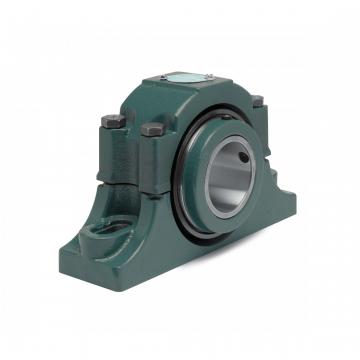 Mounted Tapered Roller Bearings P4B-EXL-212RE
Mounted Tapered Roller Bearings P4B-EXL-212RE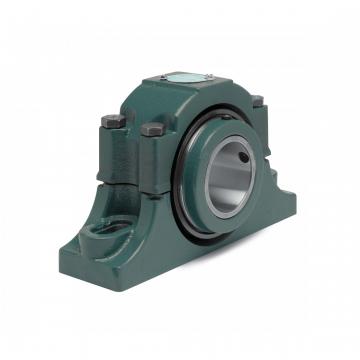 Mounted Tapered Roller Bearings P4B-EXL-400R
Mounted Tapered Roller Bearings P4B-EXL-400R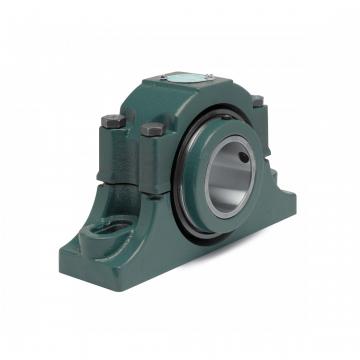 Mounted Tapered Roller Bearings P4B-EXL-400RE
Mounted Tapered Roller Bearings P4B-EXL-400RE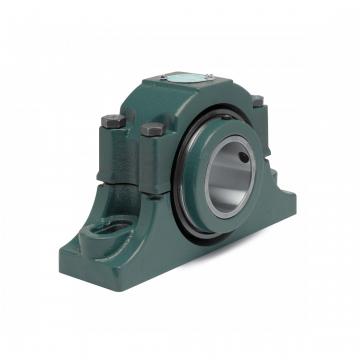 Mounted Tapered Roller Bearings P4B-EXL-315RE
Mounted Tapered Roller Bearings P4B-EXL-315RE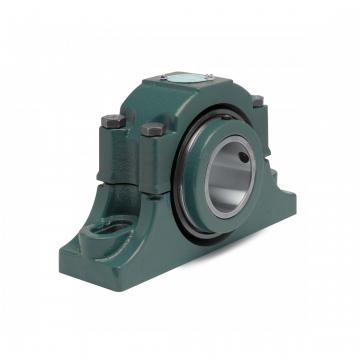 Mounted Tapered Roller Bearings P4B-EXL-207RE
Mounted Tapered Roller Bearings P4B-EXL-207RE